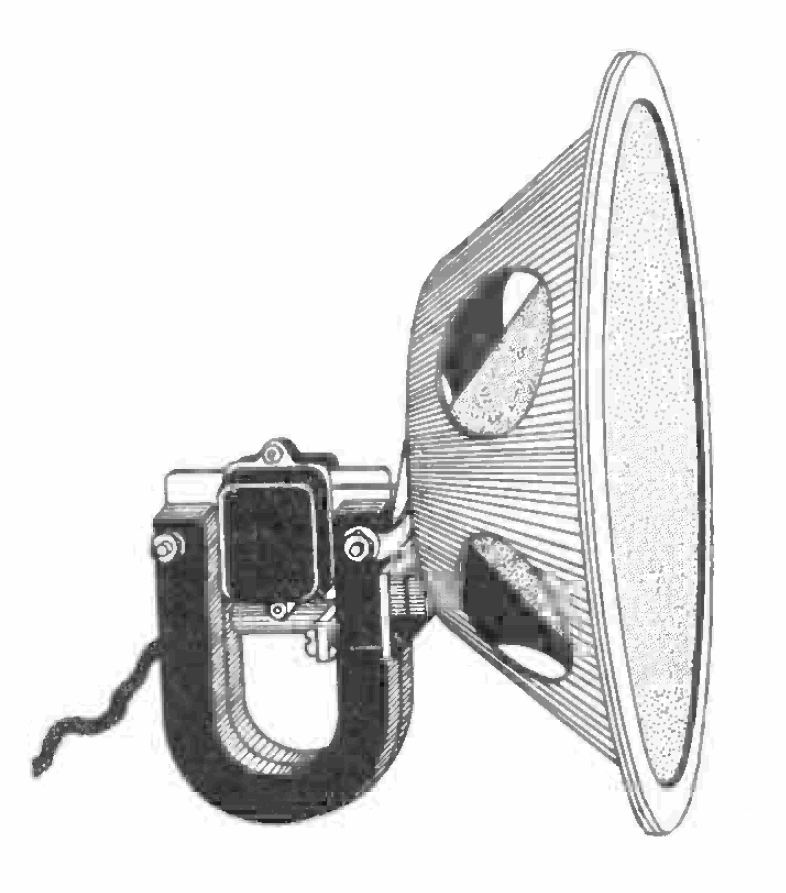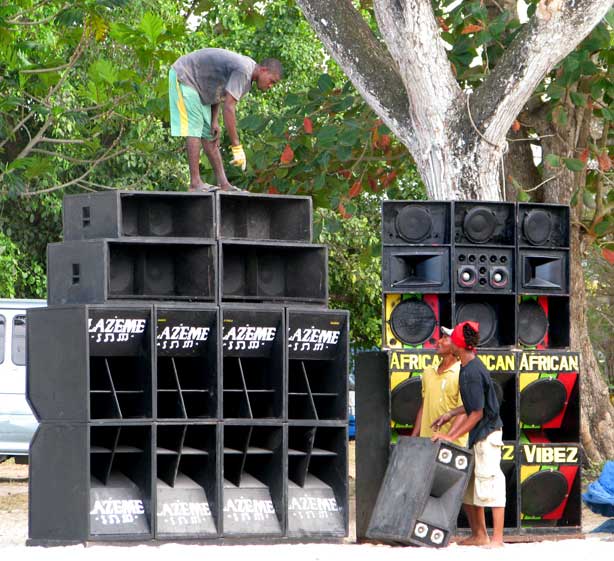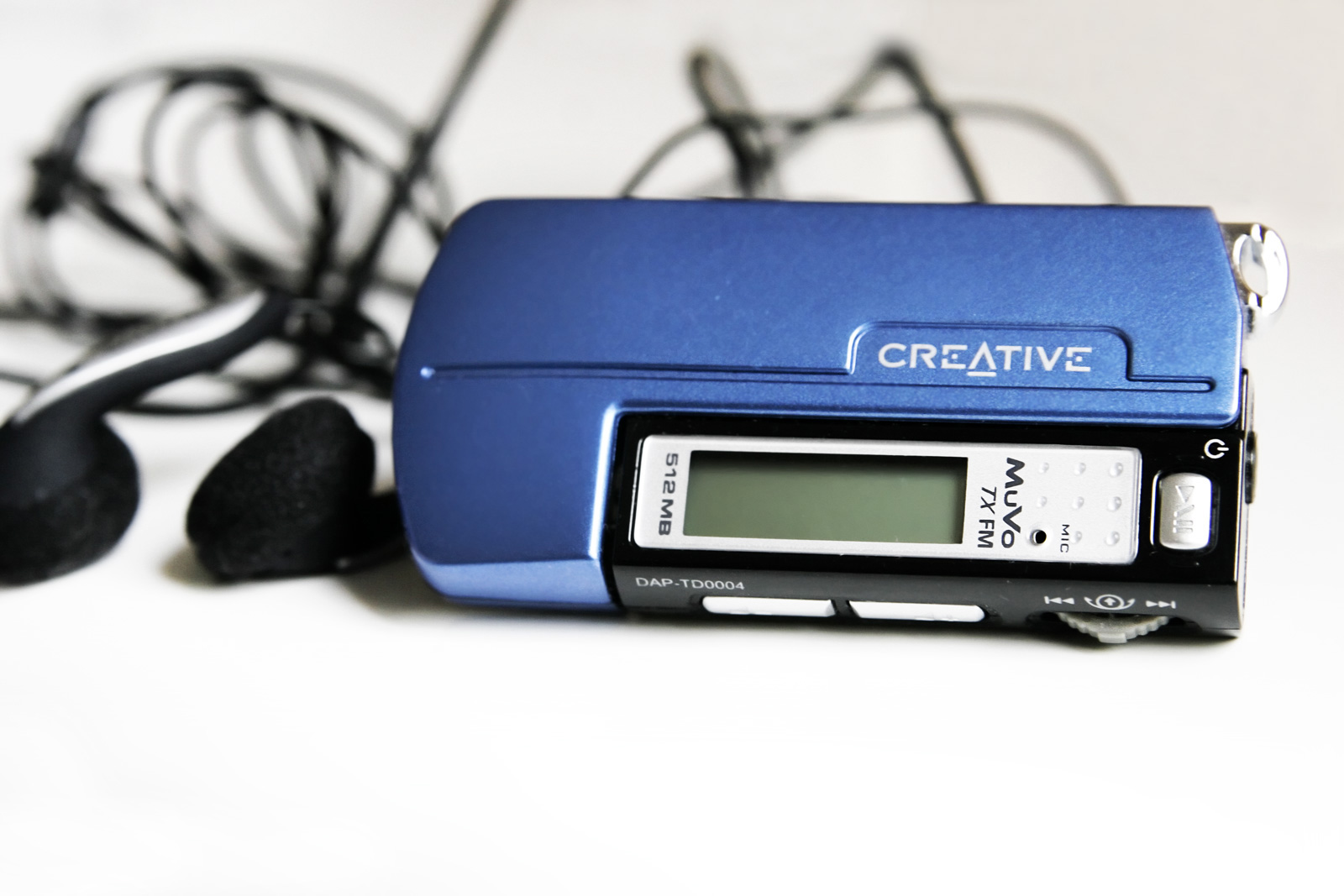|
Crystal Earpiece
A crystal earpiece is a type of piezoelectric earphone, producing sound by using a piezoelectric crystal, a material that changes its shape when electricity is applied to it. It is usually designed to plug into the ear canal of the user. Operation A crystal earpiece typically consists of a piezoelectric crystal with metal electrodes attached to either side, glued to a conical plastic or metal foil diaphragm, enclosed in a plastic case. The piezoelectric material used in early crystal earphones was Rochelle salt, but modern earphones use barium titanate, or less often quartz. When the audio signal is applied to the electrodes, the crystal bends back and forth a little with the signal, vibrating the diaphragm. The diaphragm pushes on the air, creating sound waves. The plastic earpiece casing confines the sound waves and conducts them efficiently into the ear canal, to the eardrum. The diaphragm is generally fixed at its outer edge, relying on bending to operate. The air path ... [...More Info...] [...Related Items...] OR: [Wikipedia] [Google] [Baidu] |
Piezoelectric
Piezoelectricity (, ) is the electric charge that accumulates in certain solid materials—such as crystals, certain ceramics, and biological matter such as bone, DNA, and various proteins—in response to applied stress (mechanics), mechanical stress. The piezoelectric effect results from the linear electromechanical interaction between the mechanical and electrical states in crystalline materials with no centrosymmetry, inversion symmetry. The piezoelectric effect is a reversible process (thermodynamics), reversible process: List of piezoelectric materials, materials exhibiting the piezoelectric effect also exhibit the reverse piezoelectric effect, the internal generation of a mechanical strain resulting from an applied electric field. For example, lead zirconate titanate crystals will generate measurable piezoelectricity when their static structure is Deformation (physics), deformed by about 0.1% of the original dimension. Conversely, those same crystals will change about 0.1 ... [...More Info...] [...Related Items...] OR: [Wikipedia] [Google] [Baidu] |
Monaural
Monaural sound or monophonic sound (often shortened to mono) is sound intended to be heard as if it were emanating from one position. This contrasts with stereophonic sound or ''stereo'', which uses two separate audio channels to reproduce sound from two microphones on the right and left side, which is reproduced with two separate loudspeakers to give a sense of the direction of sound sources. In mono, only one loudspeaker is necessary, but, when played through multiple loudspeakers or headphones, identical audio signals are fed to each speaker, resulting in the perception of one-channel sound "imaging" in one sonic space between the speakers (provided that the speakers are set up in a proper symmetrical critical-listening placement). Monaural recordings, like stereo ones, typically use multiple microphones fed into multiple channels on a recording console, but each channel is " panned" to the center. In the final stage, the various center-panned signal paths are usually mix ... [...More Info...] [...Related Items...] OR: [Wikipedia] [Google] [Baidu] |
Amplifier
An amplifier, electronic amplifier or (informally) amp is an electronic device that can increase the magnitude of a signal (a time-varying voltage or current). It is a two-port electronic circuit that uses electric power from a power supply to increase the amplitude (magnitude of the voltage or current) of a signal applied to its input terminals, producing a proportionally greater amplitude signal at its output. The amount of amplification provided by an amplifier is measured by its gain: the ratio of output voltage, current, or power to input. An amplifier is defined as a circuit that has a power gain greater than one. An amplifier can be either a separate piece of equipment or an electrical circuit contained within another device. Amplification is fundamental to modern electronics, and amplifiers are widely used in almost all electronic equipment. Amplifiers can be categorized in different ways. One is by the frequency of the electronic signal being amplified. For ... [...More Info...] [...Related Items...] OR: [Wikipedia] [Google] [Baidu] |
Microphone
A microphone, colloquially called a mic (), or mike, is a transducer that converts sound into an electrical signal. Microphones are used in many applications such as telephones, hearing aids, public address systems for concert halls and public events, motion picture production, live and recorded audio engineering, sound recording, two-way radios, megaphones, and radio and television broadcasting. They are also used in computers and other electronic devices, such as mobile phones, for recording sounds, speech recognition, Voice over IP, VoIP, and other purposes, such as Ultrasonic transducer, ultrasonic sensors or knock sensors. Several types of microphone are used today, which employ different methods to convert the air pressure variations of a sound wave to an electrical signal. The most common are the dynamic microphone, which uses a coil of wire suspended in a magnetic field; the condenser microphone, which uses the vibrating Diaphragm (acoustics), diaphragm as a capacitor ... [...More Info...] [...Related Items...] OR: [Wikipedia] [Google] [Baidu] |
Electrical Impedance
In electrical engineering, impedance is the opposition to alternating current presented by the combined effect of Electrical_resistance, resistance and Electrical_reactance, reactance in a electrical circuit, circuit. Quantitatively, the impedance of a two-terminal Electrical element, circuit element is the ratio of the phasor, complex representation of the Sine wave, sinusoidal voltage between its terminals, to the complex representation of the current flowing through it. In general, it depends upon the frequency of the sinusoidal voltage. Impedance extends the concept of Electrical resistance, resistance to alternating current (AC) circuits, and possesses both Euclidean vector, magnitude and Phase (waves), phase, unlike resistance, which has only magnitude. Impedance can be represented as a complex number, with the same units as resistance, for which the SI unit is the ohm (). Its symbol is usually , and it may be represented by writing its magnitude and phase in the Polar ... [...More Info...] [...Related Items...] OR: [Wikipedia] [Google] [Baidu] |
Sensitivity (electroacoustics)
The sensitivity of an electronic device, such as a communications system receiver, or detection device, such as a PIN diode, is the minimum magnitude of input signal required to produce a specified output signal having a specified signal-to-noise ratio, or other specified criteria. In general, it is the signal level required for a particular quality of received information. In signal processing, sensitivity also relates to bandwidth and noise floor as is explained in more detail below. In the field of electronics different definitions are used for sensitivity. The IEEE dictionary states: "Definitions of sensitivity fall into two contrasting categories." It also provides multiple definitions relevant to sensors among which 1: "(measuring devices) The ratio of the magnitude of its response to the magnitude of the quantity measured.” and 2: "(radio receiver or similar device) Taken as the minimum input signal required to produce a specified output signal having a specified signal- ... [...More Info...] [...Related Items...] OR: [Wikipedia] [Google] [Baidu] |
Moving Iron Speaker
The moving iron speaker was the earliest type of electric loudspeaker. They are still used today in some miniature speakers where small size and low cost are more important than sound quality. A moving iron speaker consists of a ferrous-metal diaphragm or reed, a permanent magnet and a coil of insulated wire. The coil is wound around the permanent magnet to form a solenoid. When an audio signal is applied to the coil, the strength of the magnetic field varies, and the springy diaphragm or reed moves in response to the varying force on it. The moving iron loudspeaker Bell telephone receiver was of this form. Large units had a paper cone attached to a ferrous metal reed. There are several types of moving iron speaker. Modern damped moving iron mechanisms can provide respectable sound quality, and are used in headphones. The first moving iron transducer, the telephone receiver or earphone, evolved with the first telephone systems in the 1870s. Moving iron horn loudspeakers ... [...More Info...] [...Related Items...] OR: [Wikipedia] [Google] [Baidu] |
Moving Coil Loudspeaker
A loudspeaker (commonly referred to as a speaker or, more fully, a speaker system) is a combination of one or more speaker drivers, an enclosure, and electrical connections (possibly including a crossover network). The speaker driver is an electroacoustic transducer that converts an electrical audio signal into a corresponding sound. The driver is a linear motor connected to a diaphragm, which transmits the motor's movement to produce sound by moving air. An audio signal, typically originating from a microphone, recording, or radio broadcast, is electronically amplified to a power level sufficient to drive the motor, reproducing the sound corresponding to the original unamplified signal. This process functions as the inverse of a microphone. In fact, the ''dynamic speaker'' driver—the most common type—shares the same basic configuration as a dynamic microphone, which operates in reverse as a generator. The dynamic speaker was invented in 1925 by Edward W. Kellogg an ... [...More Info...] [...Related Items...] OR: [Wikipedia] [Google] [Baidu] |
Bass (sound)
Bass ( ) (also called bottom end) describes tones of low (also called "deep") frequency, pitch and range from 16 to 250 Hz (C0 to middle C4) and bass instruments that produce tones in the low-pitched range C2-C4. They belong to different families of instruments and can cover a wide range of musical roles. Since producing low pitches usually requires a long air column or string, and for stringed instruments, a large hollow body, the string and wind bass instruments are usually the largest instruments in their families or instrument classes. Musical role When bass notes are played in a musical ensemble such an orchestra, they are frequently used to provide a counterpoint or counter-melody, in a harmonic context either to outline or juxtapose the progression of the chords, or with percussion to underline the rhythm. Rhythm section In popular music, the bass part, which is called the "bassline", typically provides harmonic and rhythmic support to the band. The bass playe ... [...More Info...] [...Related Items...] OR: [Wikipedia] [Google] [Baidu] |
Resonance
Resonance is a phenomenon that occurs when an object or system is subjected to an external force or vibration whose frequency matches a resonant frequency (or resonance frequency) of the system, defined as a frequency that generates a maximum amplitude response in the system. When this happens, the object or system absorbs energy from the external force and starts vibrating with a larger amplitude. Resonance can occur in various systems, such as mechanical, electrical, or acoustic systems, and it is often desirable in certain applications, such as musical instruments or radio receivers. However, resonance can also be detrimental, leading to excessive vibrations or even structural failure in some cases. All systems, including molecular systems and particles, tend to vibrate at a natural frequency depending upon their structure; when there is very little damping this frequency is approximately equal to, but slightly above, the resonant frequency. When an Oscillation, oscillat ... [...More Info...] [...Related Items...] OR: [Wikipedia] [Google] [Baidu] |
Portable Media Player
A portable media player (PMP) or digital audio player (DAP) is a portable consumer electronics device capable of storing and playing digital media such as audio, images, and video files. Normally they refer to small, Electric battery, battery-powered devices utilising flash memory or a Hard disk drive, hard disk for storing various media Computer file, files. MP3 players has been a popular alternative name used for such devices, even if they also support other file formats and media types other than MP3 (for example Advanced Audio Coding, AAC, FLAC, Windows Media Audio, WMA). Generally speaking, PMPs are equipped with a 3.5 mm headphone jack which can be used for headphones or to connect to a boombox, home audio system, or connect to car audio and home High fidelity, stereos wired or via a wireless connection such as Bluetooth, and some may include radio tuners, voice recording and other features. In contrast, analogue portable audio players play music from non-digital m ... [...More Info...] [...Related Items...] OR: [Wikipedia] [Google] [Baidu] |






